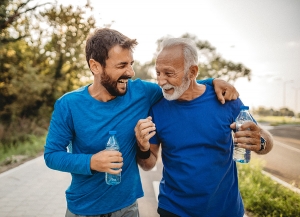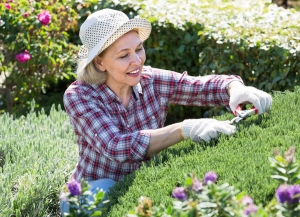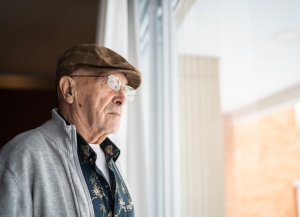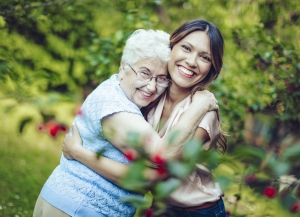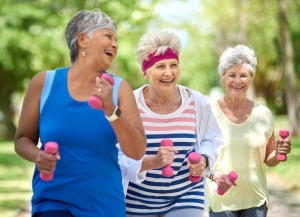Ah… the big 5-0! Whether you’re just celebrating the “half century” milestone, or you’ve been in your 50s for a while, you’ve probably noticed the subtle signs of aging in the way you move, how you handle stress, and your energy level. Fear Not!
You can continue to age wise and well by following our tips for aging into your fifties—giving additional longevity to your mind-body vitality.
How Your Body Changes During Your 50s
The aging process actually begins in earnest shortly after age 30. At this point, age-related changes tend to be slow and subtle, but become definitively noticeable by the time you enter your forties.
For both men and women, the body loses physical and emotional resilience as they age. Once you get to age 50, there are several noticeable changes such as:
- Lower energy level
- Tiring more easily
- Longer time to recover from illness
- Decrease in muscle strength, agility & flexibility
- Joint stiffness, back pain
- Changes in fat-to-muscle ratio
- Wrinkles are more noticeable
- Thinning hair
- Increased sensitivity to noise
- Changes in sex drive or function
- Menopause for women
- Increased forgetfulness
- Decreased emotional resilience
Some of these changes will be due to hormonal fluctuations, such as the loss of estrogen during menopause for women, and dropping testosterone levels for both men and women.
Really, why do we age?
New research points to inflammageing as significant underlying cause for the aging process. The theory goes something like this:
Age-related changes happen due to inflammatory responses that occur in in the body over time. These changes have effects on all the major physiological systems: immune, nervous, cardiovascular, musculoskeletal, and endocrine. Essentially, everything from the brain and nerves to muscle and bone, heart, lungs, and metabolism go into decline.
What’s that mean, exactly?
You start to feel less resilient to the stresses of life, the environment, illness, and so on. This “inflammageing” process looks different for each person based on factors such as:
- Genetics – some people age slower, others fast
- Personal health history – how well have you taken care of yourself over the years?
- Illness history – have you had many health problems?
- Lifestyle – do you take the time to take care of your mind, body and spirit? Diet, how much you drink/smoke, exercise, etc.
How to Age Well in Your Fifties
Here are our 5 essential tips to support optimal health and youthful vitality in your fifties:
Tip #1: Stay Up to Date on Health Screenings. Be sure to see your healthcare provider for the appropriate age-specific health screenings. For example, if you’ve been a smoker, then a lung cancer screening may be essential. And, if you do still smoke, try to quit—it’s never too late! You likely also need to have routine screenings for breast cancer, prostate cancer, colonoscopy, among others.
Tip #2: Stay Mentally Fit. Mental stimulation is essential to protecting the brain from age-related decline and dementia. Stay mentally engaged by learning a new skill or teaching someone a skill you are good at. Put you mind to work on a daily puzzle or crossword.
Tip #3: Prioritize Sleep. If you don’t have a sleep routine, it’s not too late to create one. Quality sleep isn’t just about how many hours you're asleep; it’s the quality of those hours. A sleep routine includes a routine such as a warm bath or skincare ritual before bed, darkening the room and keeping the temperature cool, and turning-in and waking at consistent times each day. Remember to unplug from digital devices within 2 hours of bedtime.
Tip #4: Eat Fresh, Whole Foods. A “rainbow on your plate” is a great way to think of healthy eating. Be sure your diet is full of a variety of fruits, veggies, lean protein, and unprocessed grains. Limit eating foods from a box or bag as this will reduce your intake of sodium, sugar, and trans-fats. Hydration is important, especially for older adults. Be sure to drink more water, less soda and alcoholic beverages to support optimal health in your fifties.
Bonus Nutrition Tip: Aging bodies don’t always absorb nutrients as well as when we were younger. And sometimes, as we age, we don’t or eat a balanced-enough diet to provide essential nutrients that aging cells need. You may want to consult with your doctor about nutritional supplements for older adults, including: calcium, magnesium, fiber, vitamin D, vitamin B-6, vitamin B-12, probiotics, and Omega-3 fatty acids. You may also need more protein in your diet.
Tip #5: Move Your Body. Daily physical activity helps to protect the heart, lungs, muscles, bones, and joints. Your 50’s is the ideal time to participate in gentle, weight-bearing activities to help slow down bone loss. New to exercise? Follow the physical activity guidelines for older adults, or consult with a certified fitness professional who specializes in older adult exercise and wellness.
Tip #6: Connect with Others. Social connections are crucial to mental health at every age, and even more so in the older adult years. Connecting with others reduces loneliness, which the US Surgeon General has stated is as deadly as smoking! Look for ways to engage with people of all ages and in different settings. If your family and friend circle is small, consider volunteering in your community or joining a book or board game club at your local library or bookstore.
At Everbrook Senior Living, we view the fifties as a time to focus on you! After years of attending to family, a career, and community obligations, we support your health and wellness journey through state-of-the-art residential and wellness amenities. We offer programs, clubs, classes, and outings that help you preserve and enhance your physical and emotional well-being. Contact us today and come see for yourself what aging wise and well looks like at Everbrook!







